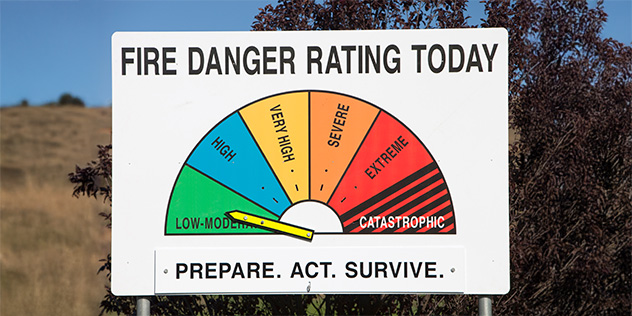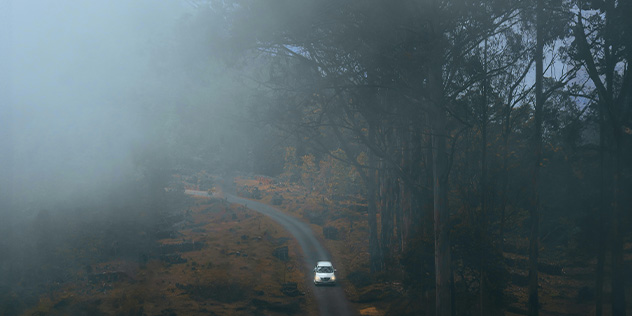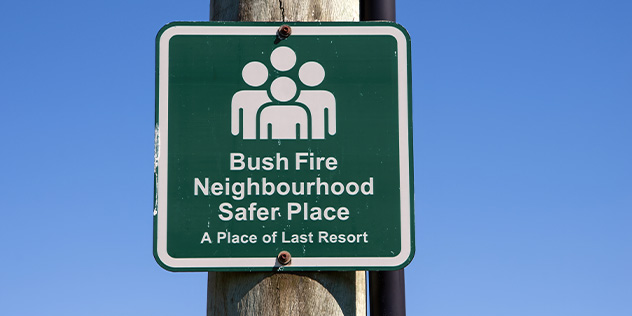It’s important to know what to do if you find yourself driving in an area threatened by bushfire. First things first: before heading out on a road trip during bushfire season, download and check your state’s hazards app, such as Hazards Near Me NSW.
Also check the Fire Danger Rating for the area you are driving into. Motorists are strongly advised to avoid fires, but if you do have to drive into a bushfire-affected area, take water, food supplies, a full fuel tank or EV battery, and a fully charged mobile phone with you, as conditions can change quickly and frequently.
If you encounter smoke across the road, pull over and assess the situation before driving through it. Most importantly, if there are flames, don’t attempt to drive through them.
If you are caught in a bushfire in your vehicle – no matter whether it has a combustion engine, or is a hybrid, or a battery electric vehicle (BEV) – it’s better to be inside the vehicle than on foot, according to the NSW Rural Fire Service.
“It’s the positioning of the vehicle that gives it the best chance of surviving – the worst place is on foot, the second worst place is in a vehicle,” a spokesperson for the RFS tells Open Road. “You want the vehicle to face the fire to give you the most distance between you and the fire front and to reduce the radiant heat.”
Ultimately, being prepared, staying aware of your surroundings, and keeping a level head in an emergency are the best ways to ensure you stay safe around bushfires this summer.
Here’s what to do before you head off during bushfire season, and what to do if you find yourself driving during a bushfire.

Before you go
-
Download the Hazards Near Me NSW app (iOS/Android) for live bushfire and other emergency alerts. Set up a Watch Zone for your route and destination.
-
Do not rely on one information source, as mobile coverage can be patchy in remote areas. Check NSW RFS online updates or call the Bush Fire Information Line on 1800 679 737.
-
Check the Fire Danger Rating for your journey. On Extreme or Catastrophic days, plan to leave bushfire-risk areas early. Aim to avoid travelling on Total Fire Ban days.
-
Pack an emergency kit including water, a battery-powered AM/FM radio, woollen blankets, protective clothing (long sleeves, pants, sturdy shoes), a paper map and a first aid kit. A two-way CB radio is also a good idea.
Safety measures on the road near bushfires
-
Check Live Traffic NSW for road closures before committing to a route. Monitor BOM weather updates and ABC local radio, especially in remote areas where coverage can drop.
-
Tell someone your route and estimated arrival time before leaving.
-
Follow the advice of the Rural Fire Service and police, listen to your local radio for updates on fire conditions in your area, and check Live Traffic NSW for updates on road closures.
-
Avoid driving in areas where controlled burning and bushfires are burning. You should only drive during a bushfire as a last resort or if instructed to do so.
-
Turn on your headlights. Bushfire smoke decreases visibility.
If you are caught in the path of a bushfire
Driving during a bushfire is extremely dangerous. Plan to avoid it by leaving early on high-risk days. Only use the steps below if you cannot avoid the fire.
-
Pull over in a clear area off the roadway, away from trees, scrub and tall grass. Face the front of the vehicle towards the fire, maximising the distance between the vehicle occupants and the fire’s radiant heat.
-
Close all windows and air vents.
-
Turn off the engine and switch on headlights and hazard lights.
-
Cover everyone in the vehicle with woollen blankets. Get below window level to reduce radiant heat exposure.
-
Drink water and cover your mouth with a damp cloth.
-
Stay inside until the fire front passes. Surfaces may remain dangerously hot – exit the vehicle with caution.

Powerline and electrical hazards
-
Expect powerlines to sag with the heat during bushfires. Stay at least eight metres clear of fallen or sagging powerlines and call Triple Zero 000.
-
If a powerline is on your vehicle, stay inside and call Triple Zero 000.
-
If fire forces you to leave, jump well clear, do not touch the vehicle and ground at the same time. Land with feet together and shuffle or jump with feet together until at least eight metres away.
Related tips and information
Understand NSW bushfire alert levels: Advice, Watch and Act, Emergency Warning. Follow instructions and be ready to leave early.
Stay up to date on fires in your area at Fires Near Me - NSW Rural Fire Service
Download the Hazards Near me smartphone app which shows current information about local emergencies, including flood, bushfire and tsunamis, and advice on how to stay safe.
Download the Emergency plus app. The app uses GPS functionality built into smartphones to help a Triple Zero (000) caller provide the critical location details required to mobilise emergency services.
Locate the nearest Neighbourhood Safer Place if you are already at a destination and your plan fails.




